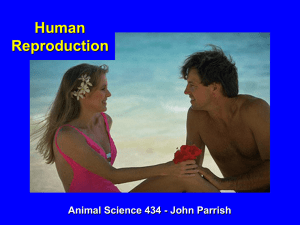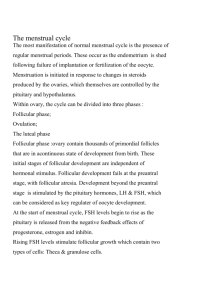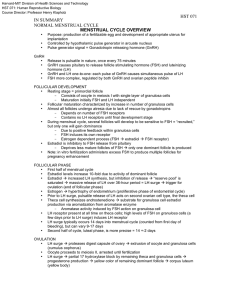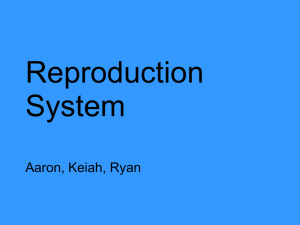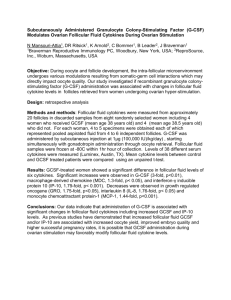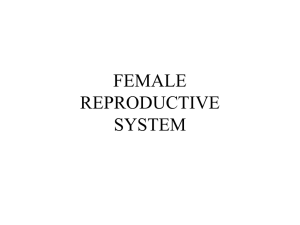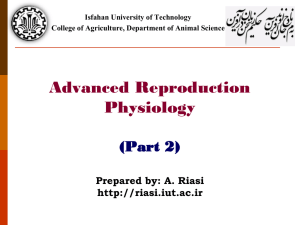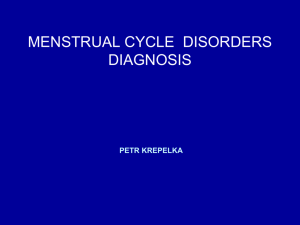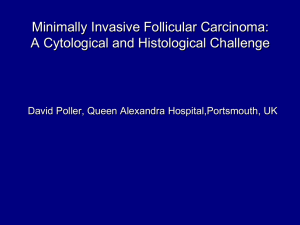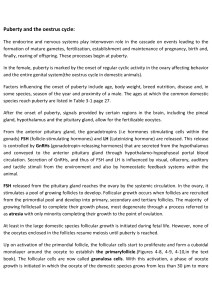Chapter 8 - University of Idaho
advertisement
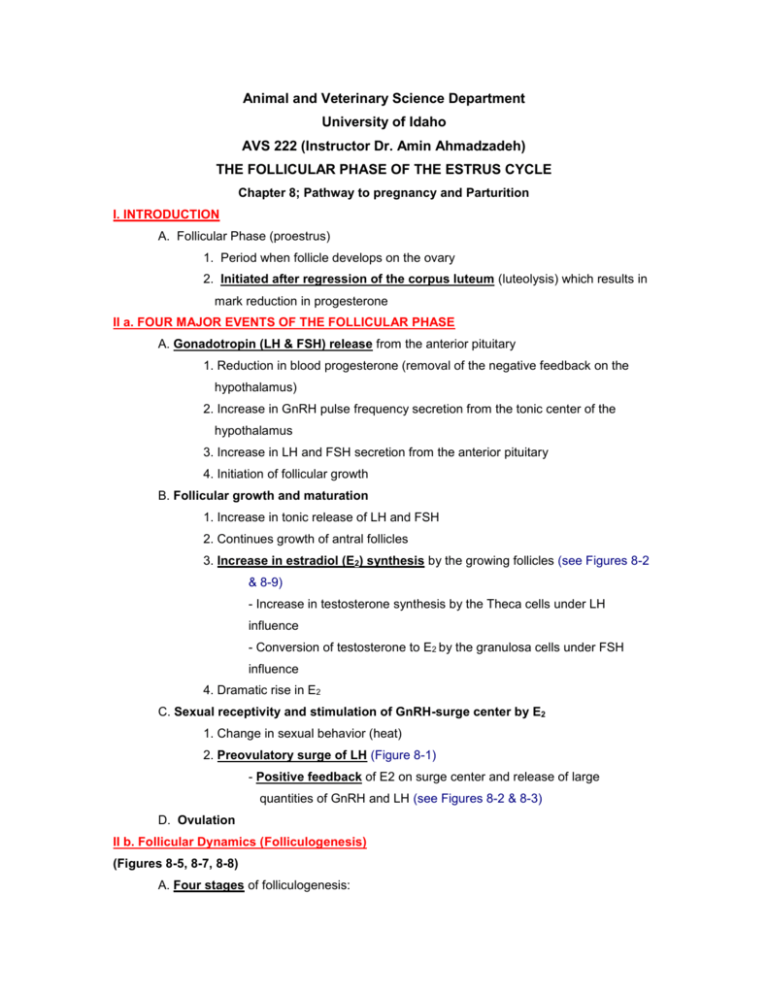
Animal and Veterinary Science Department University of Idaho AVS 222 (Instructor Dr. Amin Ahmadzadeh) THE FOLLICULAR PHASE OF THE ESTRUS CYCLE Chapter 8; Pathway to pregnancy and Parturition I. INTRODUCTION A. Follicular Phase (proestrus) 1. Period when follicle develops on the ovary 2. Initiated after regression of the corpus luteum (luteolysis) which results in mark reduction in progesterone II a. FOUR MAJOR EVENTS OF THE FOLLICULAR PHASE A. Gonadotropin (LH & FSH) release from the anterior pituitary 1. Reduction in blood progesterone (removal of the negative feedback on the hypothalamus) 2. Increase in GnRH pulse frequency secretion from the tonic center of the hypothalamus 3. Increase in LH and FSH secretion from the anterior pituitary 4. Initiation of follicular growth B. Follicular growth and maturation 1. Increase in tonic release of LH and FSH 2. Continues growth of antral follicles 3. Increase in estradiol (E2) synthesis by the growing follicles (see Figures 8-2 & 8-9) - Increase in testosterone synthesis by the Theca cells under LH influence - Conversion of testosterone to E2 by the granulosa cells under FSH influence 4. Dramatic rise in E2 C. Sexual receptivity and stimulation of GnRH-surge center by E2 1. Change in sexual behavior (heat) 2. Preovulatory surge of LH (Figure 8-1) - Positive feedback of E2 on surge center and release of large quantities of GnRH and LH (see Figures 8-2 & 8-3) D. Ovulation II b. Follicular Dynamics (Folliculogenesis) (Figures 8-5, 8-7, 8-8) A. Four stages of folliculogenesis: 1) Recruitment 2) Selection 3) Dominance 4) Atresia (not-perforated) B. Hormonal profile 1. Recruitment: high FSH, low LH, and no inhibin 2. Selection: moderate FSH, moderate LH, and low inhibin 3. Dominance: low FSH, high LH, and high inhibin Follicular dynamics occurs continuously through out the estrous cycle II C. STEROIDOGENESIS BY THE DOMINANT FOLLICLE (Figure 8-9) A. Two cell types are around the follicle 1. Theca cells - Have LH receptors - Synthesize Testosterone 2. Granulosa cells - Have FSH receptors - Synthesize Estradiol B. Effects of Estradiol on reproductive tract (see figures 8-10 & 8-11) 1. Increased blood flow 2. Genital swelling 3. Change in tissue electrical conductivity 4. Increase in leukocytes and mucosal secretion 5. Increase smooth muscle contraction III. ROLE OF LH DURING THE FOLLICULAR PHASE A. Weakening of the follicular wall and ovulation B. Reconstruction and remodeling of the theca cells and granulosa cells - Preparation for progesterone synthesis C. Oocyte (egg) maturation and completion of Oogenesis (egg division) IV. OVULATION EVENT (Figure 8-13) A. Increase in PGE2 B. Elevated blood flow to ovarian tissue (Hyperemia) C. Inflammation of the theca layer and increase in intra-follicular pressure D. Start of progesterone synthesis and breakdown of connective tissue of the follicular wall - Collagenase enzyme eats up the collagen tissuesE. Contraction of ovarian smooth muscle by LH-induced increase in PGF >>> Further increase in follicular pressure and weakening of the follicular wall V. OOGENESIS (OVIGENESIS) Oogenesis: the development of mature ova (Figure 8-16) A. Primordial germ cells divide mitotically into oogonia B. Oogonia divide mitotically into primary oocytes C. Primary oocytes begin meiosis but become arrested in the dictyate phase of meiotic prophase - Originally thought to be a way to inactivate the DNA so that it is not vulnerable to insult during the lifetime of the female - Really is a period of limited activity, not a true resting period and risk is always present in humans throughout their lifetime (e.g. radiation:x-rays, cancer) D. In most domestic animals and humans, birth occurs here 1. No more primordial germ cells 2. No stem cells as in the male E. As the female nears ovulation, a primary oocyte resumes maturation, forms a secondary oocyte (1N) and polar body (1N)(end of meiosis I; beginning of meiosis II) F. Ovulation occurs (secondary oocyte); at fertilization , the second meiotic division occurs producing (LH surge is the Key for intiation of this step) 1. A second polar body (1N) 2. An ootid - 1N pronucleus contributed from the female - 1N pronucleus contributed from the male G. Syngamy: when the pronuclei join to form the zygote 2N
